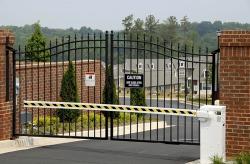Gated communities have become the accepted and often desired form of homeownership, with buyers increasingly prepared to pay the premiums associated with living behind guarded security or access-controlled gates.

Not often considered is that gated communities also aid safety measures for the neighbourhood. The body corporate can erect speed bumps and enforce lower-than-typical speeds on the roads as measures for residents' safety, especially for children.
Consequently, gated residential communities and garden apartments are the types of developments that are most likely to come onto the market. While composite South African figures are not as easily at hand, US statistics show that these types of properties have grown from only 2 000 in the 1970s to more than 50 000 by the new millennium.
That equates to around six percent of the country's households living behind walls or fences with about half of them in communities where access is controlled by gates, entry codes, key cards or security guards.
In essence, gated communities have several common elements. Gates and fences provide the perception of security, safety and privacy, however, in affluent neighbourhoods; privacy means exclusivity and thus higher property values. Adding weight to the argument is the fact that an automatic gate system or private security access boosts the property value regardless of whether or not it actually impacts on crime in that area.
Facing facts, everyone wants to feel proud of their environment, and including the element of a gated community to the home address can offer prestige akin to a private club where access privileges are required, and the real benefits of crime prevention are a bonus.
To a lesser extent, gated communities may also offer buyers the opportunity to purchase a more modern home than those found in established areas, simply because the homes found in those communities are newer than the freestanding ones in the neighbourhood.
There is also the opportunity for sharing the costs associated with expensive facilities such as tennis courts, swimming pools, convenience centres, stables and equine facilities. These are items many property owners would be unable to afford individually, but in pooling resources and opting for communal living, this becomes accessible.
Not often considered is that gated communities also aid safety measures for the neighbourhood. The body corporate can erect speed bumps and enforce lower-than-typical speeds on the roads as measures for residents' safety, especially for children.
They also foster a sense of togetherness - a feeling of unity and the unspoken understanding that neighbours will look out for their peers, standing beside one another in times of need or when fighting for common causes.
Those luxuries come at a price with levies, generally covering communal water, rates and taxes, security, common property maintenance expenses and community employees should that be applicable - working out higher than the individual costs associated with a freestanding home.
The municipality may also deem the road infrastructure within the gated community as private property, meaning the onus for repairing potholes and maintaining the network falls on the residents as a cost above the taxes already collected for upkeeping the country's streets.
Homeowners in both freestanding properties and gated communities or flats are billed individually for their rates, lights and water use in line with recent changes to the Sectional Title Act and local municipalities' requirements.
The question arises on just how much more homeowners are prepared to pay for living in gated communities as opposed to living in freestanding properties. While not backed by qualified, independent data, the figures emerging from estate agents show a property within a gated community can command a 10 to15 percent premium on a similar freestanding home.
That equates to roughly R50 000 on a three bedroom house, yet for a buy-to-let investor, there is the possibility of recouping some of that higher capital outlay in higher rentals. On average, rental income is around 20 percent higher in gated communities with the tenants gaining a sense of value for money, security and the assured serenity made possible by the relevant rules applying to that community.
However, the elephant in the room (or the gated community) is the perceived security. Reality has shown that security in gated estates is not as efficient as projected or perceived, with many of the crimes committed undertaken by the residents themselves. In high-end property developments, the issue of bored, drug-taking youths has become something many have had to tackle while hoping it does not rear its head too high to be noticed.
While in most cases it is possible to minimise and control crime in gated communities, it can never be wholly removed. Developers put into place every conceivable means to limit crime from external sources, but the inside responsibility becomes that of the owners and the body corporate.
That means residents still need to lock their motor vehicles, not leave valuable items exposed on car seats, lock their house doors and install burglar alarm systems and burglar bars. - John Roberts









